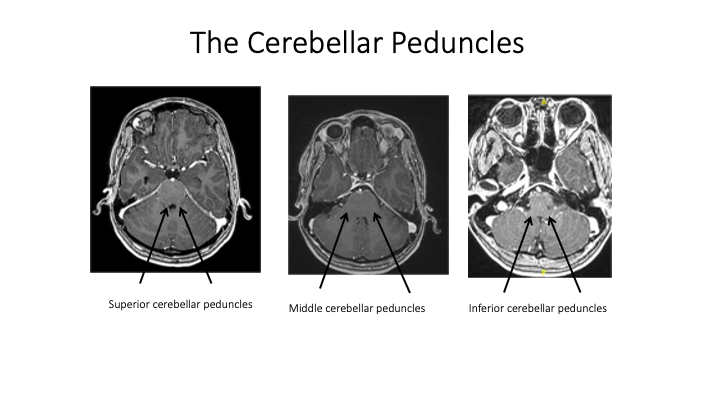But #MedStudentTwitter asked and I will deliver....To f/u on CPSolvers recent case of ataxia
Here are the basics of CEREBELLUM and ATAXIA!
1
#GeorgeFloyd
#AhmaudArbery
#BreonnaTaylor
and other lives lost to racism, structural violence, police brutality
.
.
.
.
.
.
.
@uche_blackstock @DrOniBee @LashNolen @michellemorse
The main function of the cerebellum is coordination of motor actions including eye movements and speech.
It even has a role in cognition (check out Jeremy Schmahmann’s work to learn more). sciencedirect.com/science/articl…
But here let’s focus on the motor coordination aspect.
For clinical purposes know: L and R hemispheres, and between them midline vermis.
Hemispheric lesions cause ipsilateral limb ataxia, dysdiadochokinesia, dysmetria, etc.
It needs to know 2 things:
1 The motor action the brain wants to perform
2 Where the body (and head) are in space
It then compares current body position w goal position, and comes up w a plan to help the brain reach its goal.
(Note a few other pathways travel in the inf/sup that don’t all obey the Inf/In and sUP/UP but have little clinical relevance)
First, is it unilateral or bilateral? Then time course!
My E=mc2 of neurology is
DDx= Localization x Time course
-Unilateral: ischemic stroke or hemorrhage
-Bilateral: toxic (alcohol, cytarabine)
Acute ataxia (hours-days)
-Unilateral: demyelinating (eg MS flare)
-Bilateral: Cerebellitis (e.g., pediatric post-VZV)
- Unilateral: tumor (mets in adults, primary in kids) or PML (loves middle cerebellar peduncle)
- Bilateral: Paraneoplastic (ovary, breast, testicular)
Chronic
- Degenerative: MSA-C, inherited (Friedreich, SCA, etc)
- Toxic: Chronic ETOH or phenytoin use
I once saw my mentor diagnose a CPC after the first sentence! Subacute symmetric ataxia in woman > 50 = ovarian CA
@CrystalYeoMDPhD @MadSattinJ @Tracey1milligan @DxRxEdu @CPSolvers @SchmahmannLab






